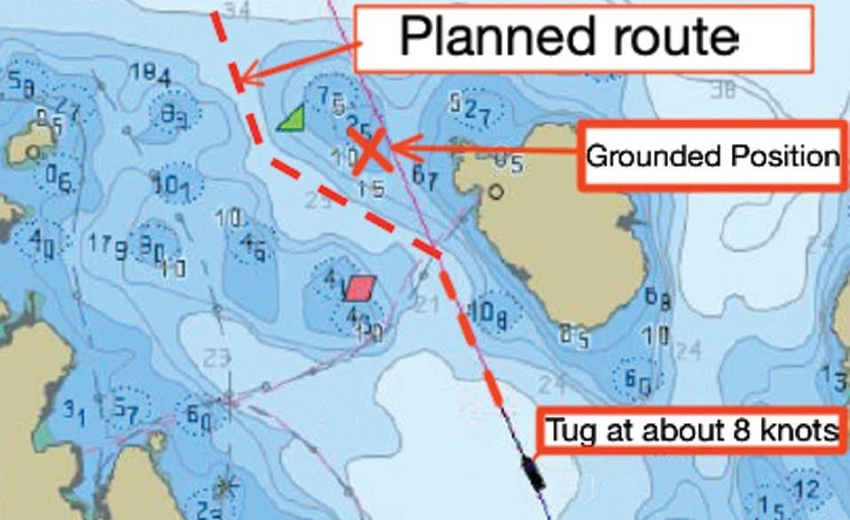Sailing in restricted waters in darkness requires close attention to navigation, even if visibility is good. A recent Mars Report describes a small tug grounding and subsequently sinking because the officer of the watch was alone on the bridge while there was no dedicated lookout.
The Mars reports are compiled (anonymously) by The Nautical Institute to prevent other accidents from happening. A summary of the incident:
A small tug was underway in good visibility, but in darkness. The vessel was making about eight knots with the officer of the watch (OOW) as sole person on the bridge and the helm on autopilot. They were on a well-travelled route, which was loaded into the vessel’s chart plotter. The two other crew members came up to the bridge from time to time for social interaction, but they were not there as dedicated lookouts.
At one point, the OOW switched on the searchlight to see the reflectors on two navigation markers that indicated some reefs. When the OOW saw that he was abreast of the red marker (see image), he moved the autopilot control stick a few “clicks” to port. Although the OOW later stated that the vessel did not change course, the AIS signals show that the vessel’s course changed by six degrees to port during the final 31 seconds before the grounding.
The OOW stated that he then wished to put the vessel into manual steering, but the vessel ran aground before he could do this, and he was thrown violently forward.
The OOW immediately tried to reverse the grounded vessel off, but found that the vessel’s propulsion system did not respond. Not long after the grounding the vessel slipped off the rocks, drifted and then sank about forty minutes after grounding.
The crew abandoned ship and were later rescued.

Advice from The Nautical Institute
- In restricted waters, close attention to navigation is needed to avoid negative consequences.
- Contrary to the rules, there was no dedicated lookout on duty. A dedicated lookout might have been able to assist the OOW in his situational awareness and could have helped prevent the accident.
Mars Reports
This accident was covered in the Mars Reports, originally published as Mars 202005, that are part of Report Number 327. A selection of this Report has also been published in SWZ|Maritime’s February issue. The Nautical Institute compiles these reports to help prevent maritime accidents. That is why they are also published on SWZ|Maritime’s website.
More reports are needed to keep the scheme interesting and informative. All reports are read only by the Mars coordinator and are treated in the strictest confidence. To submit a report, please use the Mars report form.








